
As we made our descent down the escarpment towards the Mara Triangle, we found this marvellous eagle. Identifying it caused a little confusion in the vehicle, with the general consensus being that it was likely a melanistic augur buzzard. Regardless, it was posing so beautifully with its wings spread out as if to say, ‘How do I look?’ with a sideways glance. Right at that moment, I decided to feature birds this week.

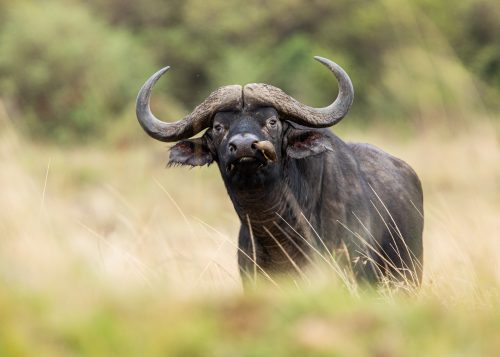
For every sighting of a big animal, there is always an equally interesting and beautiful avian sighting to go along with it. Whether it’s an oxpecker on the back of a zebra or giraffe or picking the nose of a buffalo, birds play a pivotal role in any ecosystem by controlling insects and rodents.
Take the vultures for example, often overlooked and quite frankly not the prettiest in the savanna. However, they are the ‘cleaning crew’ of the landscape. Unlike humans and most animals, vultures have very strong stomachs with immune systems resistant to a number of terrible diseases like anthrax.
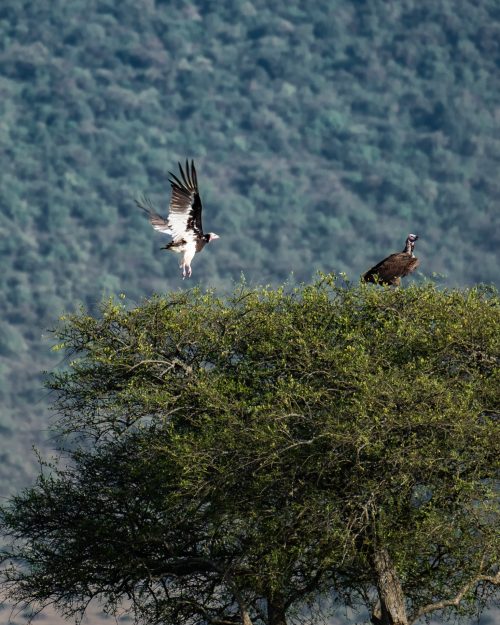
On an afternoon drive with Adam, we spotted a vulture species rarely seen in the Mara Triangle nowadays. I was lucky to snap a photograph before it flew off. This species of white-headed vulture is disappearing quickly and is classified as critically endangered by the IUCN Red List.

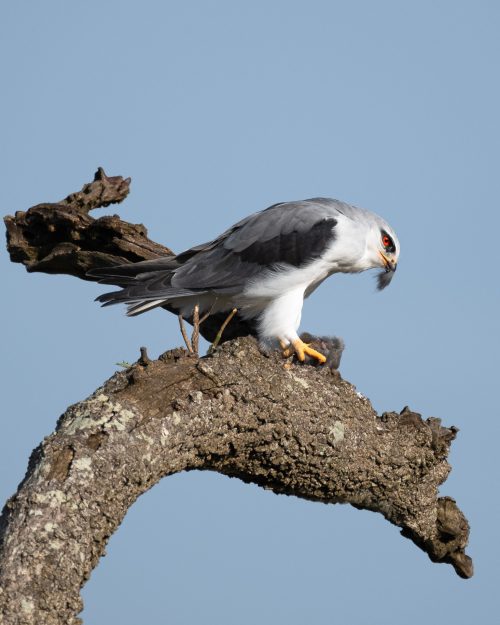
As we continued, we spotted the majestic martial eagle perched in a tree – Africa’s largest eagle with a wingspan of 2.6 metres. I learnt that this bird could easily break my arm and they have even been observed preying on small antelope. We then spotted a black-winged kite with striking red eyes, feasting on a catch.
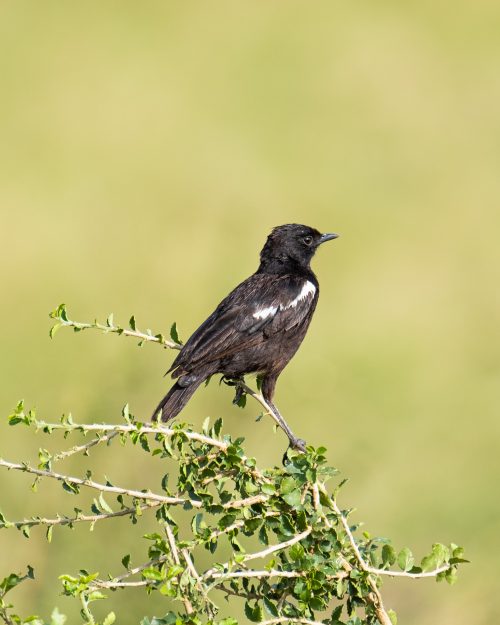
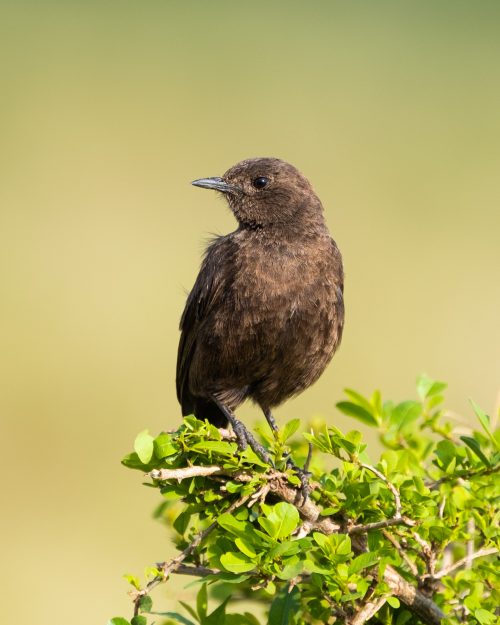
Did I mention that male birds take centre stage when it comes to identification and photography? Usually, male birds are brighter with more colourful plumage. There’s a simple reason for this – their beauty attracts potential mates. A good example are these sooty chats I was able to photograph, both male and female.

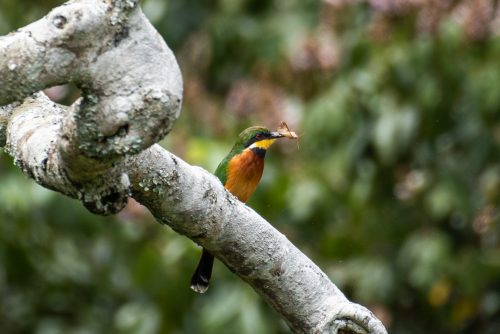

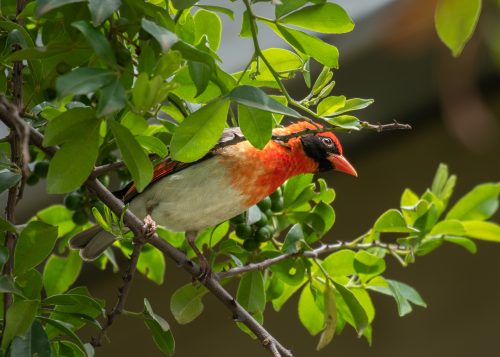
Since I decided to feature birds this week, I realised I didn’t even have to go on a drive to see the most gorgeous specimens. They are always around us at Angama Mara, treating us to a beautiful symphony. All I had to do was arm myself with a camera, a pair of binoculars and enlist the help of one of our seasoned Maasai naturalists, Alfred. Often he guides our guests on nature walks, always eager to impart his knowledge as a birder. ‘Birder’, what a name. Better than ‘twitcher’ if you ask me!
First thing 'Alfredo' (as I call him) tells me is that to become a birder, I should learn how to identify them by their calls. As if that wasn’t hard enough, he went on to explain that some birds have multiple chirping sounds. At this point, I asked no more questions regarding this method of identifying birds, but my enthusiasm is quickly revived as he tells me we are on a hunt for a rare migratory bird mostly found in forested and riverine areas.
Barely 30 minutes into our walk, Alfredo stopped suddenly, motioning for me to do the same. As a new birder, I was busy chatting away about elephants and a recent wildebeest river crossing I was able to capture some nice images of. Alfred had heard a familiar sound and his face lit up with excitement. Then he pointed to a large green and red, medium-sized bird: a Narina trogon. I must admit it’s not easy to photograph birds, they seldom wait for you to fidget with your gear.
We then proceeded to identify some starlings, bee-eaters and flycatchers among many others.




And what would a week in September be without at least a few dramatic photographs from the wildebeest Migration across the Mara River?



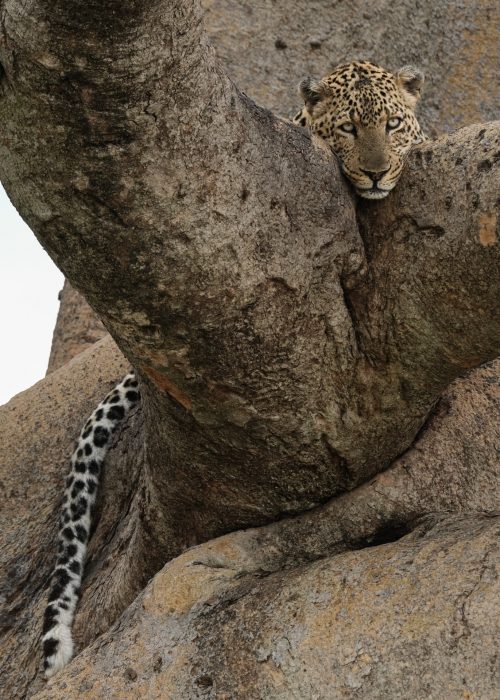
To top it off, how about this legendary old leopard male named ‘Shepherd’? He spent most of the day lazily sleeping, unbothered by the thunderous storm beating down in the Mara Triangle. He commands a massive territory and every once in a while, he appears on this huge fig tree, known as Steve’s Tree – a favourite and special spot for the Mara Triangle and the Angama family.

Sticking with our avian theme, last year at this time Adam witnessed these vultures on the banks of the Mara River. Collectively called a 'committee' or a 'venue' while in a tree, they are also known as a 'kettle' when circling and a 'wake' when feeding on a carcass on the ground. No term for sunbathing yet.
Filed under: This Week at Angama
Subscribe for Weekly Stories
Comments (0):

Out of Africa